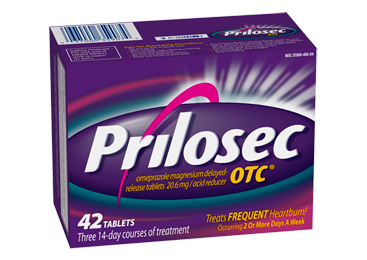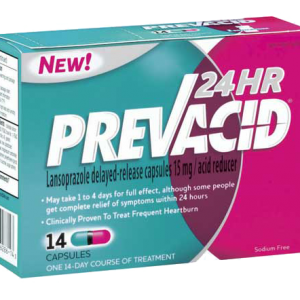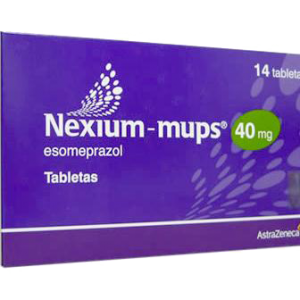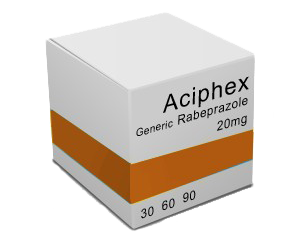What is Prilosec?
Prilosec (omeprazole) is a proton pump inhibitor that decreases the amount of acid produced in the stomach.
Prilosec is used to treat symptoms of gastroesophageal reflux disease (GERD) and other conditions caused by excess stomach acid. Omeprazole is also used to promote healing of erosive esophagitis (damage to your esophagus caused by stomach acid).
Prilosec may also be given together with antibiotics to treat gastric ulcer caused by infection with helicobacter pylori (H. pylori).
Prilosec is not for immediate relief of heartburn symptoms.
Important information
Prilosec is not for immediate relief of heartburn symptoms.
Heartburn is often confused with the first symptoms of a heart attack. Seek emergency medical attention if you have chest pain or heavy feeling, pain spreading to the arm or shoulder, nausea, sweating, and a general ill feeling.
You should not take Prilosec if you are allergic to omeprazole or to any other benzimidazole medication such as albendazole or mebendazole.
Ask a doctor or pharmacist if it is safe for you to take Prilosec if you have liver disease or heart disease, or low levels of magnesium in your blood.
Some conditions are treated with a combination of Prilosec and antibiotics. Use all medications as directed by your doctor. Read the medication guide or patient instructions provided with each medication. Do not change your doses or medication schedule without your doctor’s advice.
Take Prilosec for the full prescribed length of time. Your symptoms may improve before the infection is completely cleared.
Prilosec OTC (over-the-counter) should be taken for no longer than 14 days in a row. Allow at least 4 months to pass before you start another 14-day treatment.
Before taking this medicine
Heartburn is often confused with the first symptoms of a heart attack. Seek emergency medical attention if you have chest pain or heavy feeling, pain spreading to the arm or shoulder, nausea, sweating, and a general ill feeling.
You should not use Prilosec if you are allergic to omeprazole or to any benzimidazole medicine such as albendazole or mebendazole.
Ask a doctor or pharmacist if it is safe for you to use Prilosec if you have other medical conditions, especially:
liver disease;
low levels of magnesium in your blood; or
osteoporosis or low bone mineral density (osteopenia).
Do not use over-the-counter omeprazole (Prilosec OTC) without the advice of a doctor if you have:
trouble or pain with swallowing;
bloody or black stools, vomit that looks like blood or coffee grounds;
heartburn that has lasted for over 3 months;
frequent chest pain, heartburn with wheezing;
unexplained weight loss; or
nausea or vomiting, stomach pain.
Taking a proton pump inhibitor such as Prilosec may increase your risk of bone fracture in the hip, wrist, or spine. This effect has occurred mostly in people who have taken the medication long term or at high doses, and in those who are age 50 and older. It is not clear whether Prilosec is the actual cause of an increased risk of fracture.
Some conditions are treated with a combination of Prilosec and antibiotics. Use all medications as directed by your doctor. Read the medication guide or patient instructions provided with each medication. Do not change your doses or medication schedule without your doctor’s advice.
It is not known whether Prilosec will harm an unborn baby. Tell your doctor if you are pregnant or plan to become pregnant.
Omeprazole can pass into breast milk and may harm a nursing baby. Do not use Prilosec without a doctor’s advice if you are breast-feeding.
Do not give Prilosec to a child younger than 1 year old without the advice of a doctor.
How should I take Prilosec?
Prilosec is usually taken before eating (at least 1 hour before a meal). Follow all directions on your prescription label. Do not take this medicine in larger or smaller amounts or for longer than recommended.
Prilosec OTC (over-the-counter) should be taken only once every 24 hours for 14 days. Take the medicine in the morning before you eat breakfast. It may take up to 4 days for full effect. Do not take more than one tablet every 24 hours.
Allow at least 4 months to pass before you start another 14-day treatment with Prilosec OTC. Call your doctor if you have additional symptoms and need treatment before the 4 months has passed.
Do not crush, chew, or break a delayed release tablet, or a Prilosec OTC tablet. Swallow the tablet whole.
You may open the delayed-release capsule and sprinkle the medicine into a spoonful of applesauce to make swallowing easier. Swallow the mixture right away without chewing. Do not save for later use.
Use Prilosec for the full prescribed length of time. Your symptoms may improve before your condition is completely cleared.
If you use Prilosec for longer than 3 years, you could develop a vitamin B-12 deficiency. Talk to your doctor about how to manage this condition if you develop it.
Call your doctor if your symptoms do not improve, or if they get worse while using Prilosec.
Some conditions are treated with a combination of Prilosec and antibiotics. Use all medications as directed by your doctor. Read the medication guide or patient instructions provided with each medication. Do not change your doses or medication schedule without your doctor’s advice.
This medicine can cause unusual results with certain medical tests, and you may need to stop using the medicine for a short time before a test. Tell any doctor who treats you that you are using Prilosec.
Store at room temperature away from moisture and heat.
What happens if I miss a dose?
Take the missed dose as soon as you remember. Skip the missed dose if it is almost time for your next scheduled dose. Do not take extra medicine to make up the missed dose.
What happens if I overdose?
Seek emergency medical attention.
What should I avoid while taking Prilosec?
This medicine can cause diarrhea, which may be a sign of a new infection. If you have diarrhea that is watery or bloody, call your doctor. Do not use anti-diarrhea medicine unless your doctor tells you to.
Prilosec side effects
Get emergency medical help if you have signs of an allergic reaction to Prilosec: hives; difficulty breathing; swelling of your face, lips, tongue, or throat.
Call your doctor at once if you have:
severe stomach pain, diarrhea that is watery or bloody;
seizure (convulsions);
kidney problems–urinating more or less than usual, blood in your urine, swelling, rapid weight gain; or
symptoms of low magnesium–dizziness, confusion; fast or uneven heart rate; tremors (shaking) or jerking muscle movements; feeling jittery; muscle cramps, muscle spasms in your hands and feet; cough or choking feeling.
Common Prilosec side effects may include:
stomach pain, gas;
nausea, vomiting, diarrhea; or
headache.
This is not a complete list of side effects and others may occur. Call your doctor for medical advice about side effects.
Prilosec dosing information
Usual Adult Dose of Prilosec for Duodenal Ulcer:
20 mg orally once a day before a meal. Most patients heal within 4 to 8 weeks.
Usual Adult Dose for Helicobacter pylori Infection:
Dual therapy: omeprazole 40 mg orally once a day in the morning plus clarithromycin 500 mg orally 3 times a day on days 1 to 14. Beginning on day 15, omeprazole 20 mg orally once a day in the morning on days 15 to 28.
Triple therapy: omeprazole 20 mg plus clarithromycin 500 mg plus amoxicillin 1000 mg all given orally twice a day for 10 days. If an ulcer is present at the initiation of therapy, continue omeprazole 20 mg orally once a day for an additional 18 days.
Study (n=294) – Canadian Adult Dyspepsia Empiric Treatment-Helicobacter pylori positive (CADET-Hp): omeprazole 20 mg, metronidazole 500 mg, and clarithromycin 500 mg, twice daily for 7 days.
Usual Adult Dose of Prilosec for Gastric Ulcer:
40 mg orally once a day before a meal for 4 to 8 weeks.
Usual Adult Dose for Erosive Esophagitis:
20 mg orally once a day before a meal. This dosage may be increased to 40 mg per day based on desired clinical response and patient tolerance. Studies have been completed up to 12 months for maintenance therapy of erosive esophagitis.
Usual Adult Dose for Zollinger-Ellison Syndrome:
Initial: 60 mg orally once a day. Dosage should be individualized to patient’s needs.
Maintenance: doses up to 120 mg 3 times a day have been administered. Daily doses greater than 80 mg should be divided.
Usual Adult Dose of Prilosec for Gastroesophageal Reflux Disease:
Initial: 20 mg orally once a day before a meal for 4 to 8 weeks. This dosage may be increased to 40 mg per day if needed.
Maintenance: long-term treatment with doses of 10 to 20 mg per day may be required for maintenance therapy of refractory disease and appears to be safe.
Usual Adult Dose for Multiple Endocrine Adenomas:
Initial: 60 mg orally once a day before a meal. This dosage may be titrated based on desired clinical response and patient tolerance.
Maintenance: doses up to 120 mg 3 times a day have been administered. Daily doses greater than 80 mg should be divided.
Usual Adult Dose of Prilosec for Systemic Mastocytosis:
Initial: 60 mg orally once a day before a meal. This dosage may be titrated based on desired clinical response and patient tolerance.
Maintenance: doses up to 120 mg 3 times a day have been administered. Daily doses greater than 80 mg should be divided.
Usual Adult Dose for Dyspepsia:
Prevention of frequent heartburn: 20 mg orally once daily, before a meal, for 14 days.
Usual Pediatric Dose for Erosive Esophagitis:
Oral:
Infants:
GERD: 0.7 mg/kg/dose once daily reduced the percentage of time gastric and esophageal pH less than 4, as well as the number of reflux episodes in 10 neonates [mean PMA: 36.1 weeks, (34 to 40 weeks)] in a trial. Higher doses of 1 to 1.5 mg/kg/day have been reported
Children and Adolescents 1 to 16 years:
GERD, ulcers, esophagitis:
Manufacturer recommendations:
5 kg to less than 10 kg: 5 mg once daily
10 kg to less than or equal to 20 kg: 10 mg once daily
Greater than 20 kg: 20 mg once daily
Alternate dosing:
Children 1 to 16 years:
1 mg/kg/dose once or twice daily
Adjunctive therapy of duodenal ulcers associated with Helicobacter pylori (in combination with antibiotic therapy either clarithromycin or clarithromycin and amoxicillin) in children:
15 to 30 kg: 10 mg twice daily
Greater than 30 kg: 20 mg twice daily
Comment: The safety and efficacy of omeprazole use in patients less than 1 year of age and for pediatric uses other than the treatment of GERD and maintenance of healing of erosive esophagitis has not been established.
Usual Pediatric Dose for Gastroesophageal Reflux Disease:
Oral:
Infants:
GERD: 0.7 mg/kg/dose once daily reduced the percentage of time gastric and esophageal pH less than 4, as well as the number of reflux episodes in 10 neonates [mean PMA: 36.1 weeks, (34 to 40 weeks)] in a trial. Higher doses of 1 to 1.5 mg/kg/day have been reported
Children and Adolescents 1 to 16 years:
GERD, ulcers, esophagitis:
Manufacturer recommendations:
5 kg to less than 10 kg: 5 mg once daily
10 kg to less than or equal to 20 kg: 10 mg once daily
Greater than 20 kg: 20 mg once daily
Alternate dosing:
Children 1 to 16 years:
1 mg/kg/dose once or twice daily
Adjunctive therapy of duodenal ulcers associated with Helicobacter pylori (in combination with antibiotic therapy either clarithromycin or clarithromycin and amoxicillin) in children:
15 to 30 kg: 10 mg twice daily
Greater than 30 kg: 20 mg twice daily
Comment: The safety and efficacy of omeprazole use in patients less than 1 year of age and for pediatric uses other than the treatment of GERD and maintenance of healing of erosive esophagitis has not been established.
What other drugs will affect Prilosec?
Ask a doctor or pharmacist if it is safe for you to take Prilosec if you are also using any of the following drugs:
cilostazol;
clopidogrel;
diazepam (Valium);
digoxin;
disulfiram (Antabuse);
erlotinib;
iron-containing medicines (ferrous fumarate, ferrous gluconate, ferrous sulfate, and others);
methotrexate;
mycophenolate mofetil;
phenytoin;
St. John’s wort;
tacrolimus;
warfarin (Coumadin, Jantoven);
an antibiotic–ampicillin, amoxicillin, clarithromycin, rifampin;
antifungal medicine–ketoconazole, voriconazole; or
HIV or AIDS medication–atazanavir, nelfinavir, saquinavir.
This list is not complete. Other drugs may interact with omeprazole, including prescription and over-the-counter medicines, vitamins, and herbal products. Not all possible interactions are listed in this medication guide.




